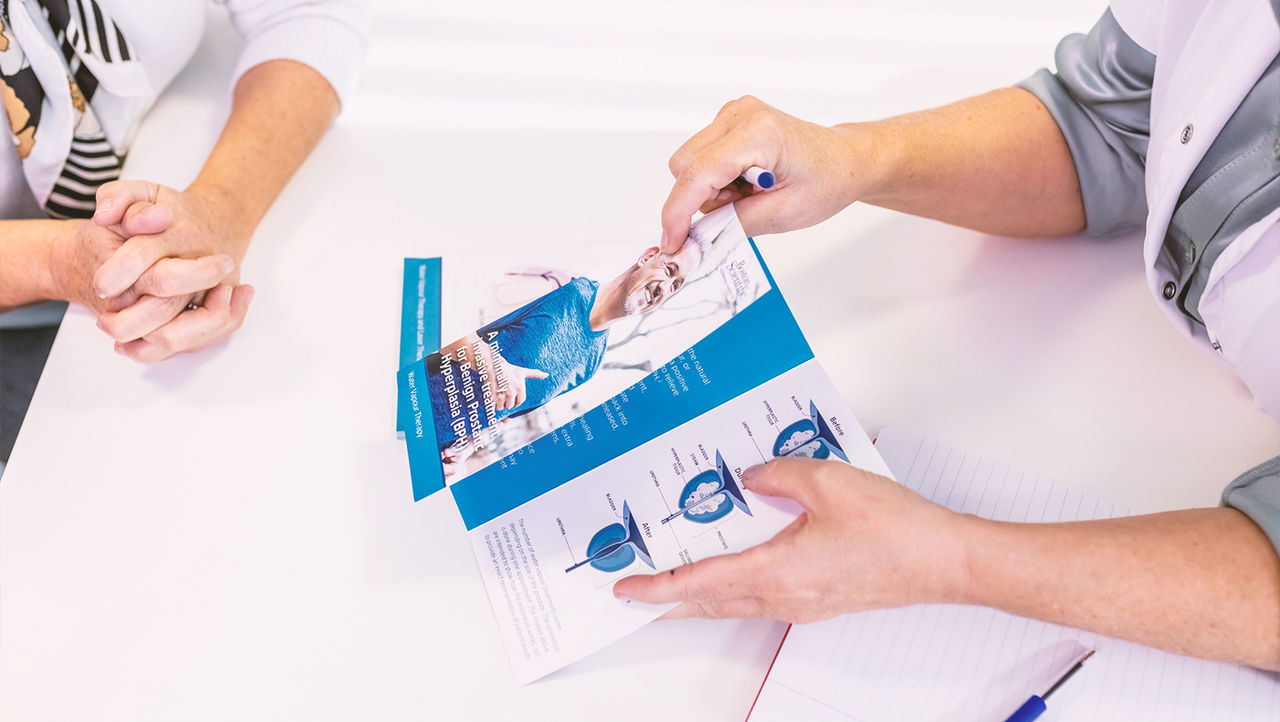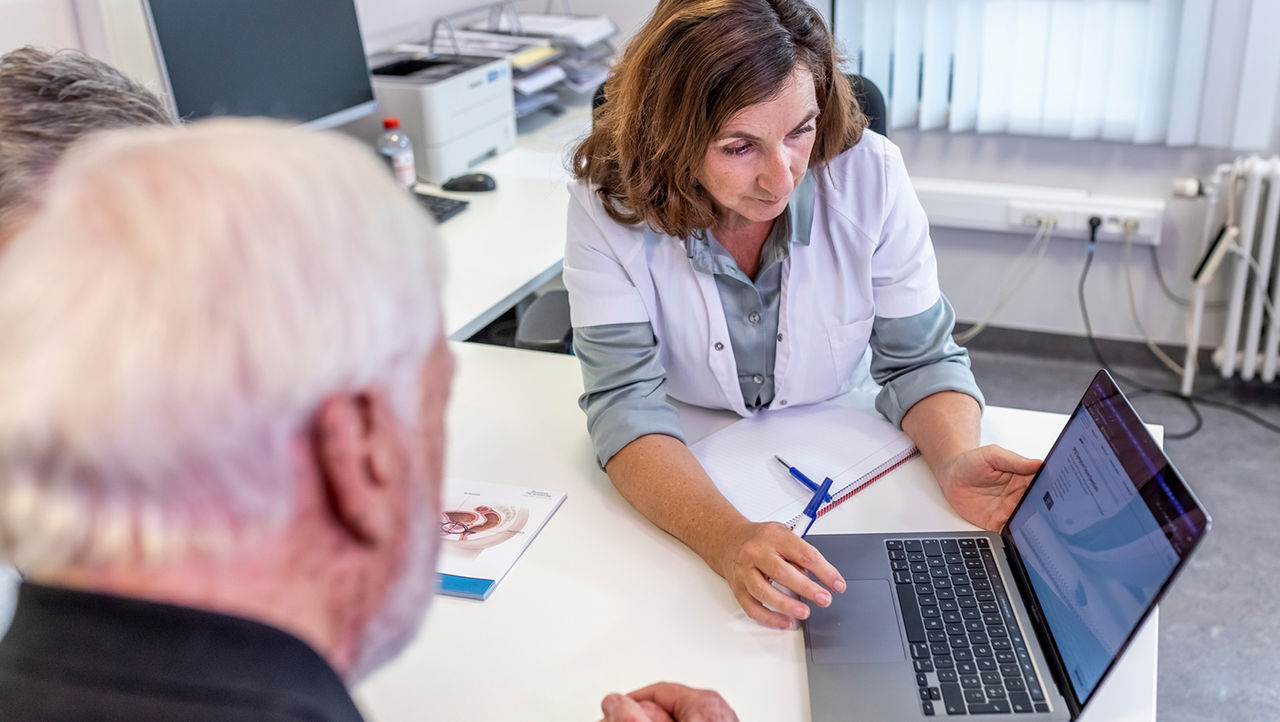Not everyone requires therapy for an enlarged prostate. Talk with your urologist about the available options so you can feel confident about the treatment pathway you choose.
Connecting with a specialist can help you make an informed decision about your enlarged prostate treatment
Which treatment you choose for an enlarged prostate will depend on how significantly your symptoms impact your quality of life among other factors. There are several treatment options available to you including:
- Active surveillance
- Prescription medications
- Minimally invasive surgery
- Surgical solutions




